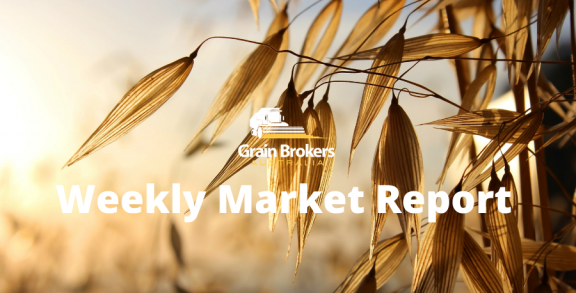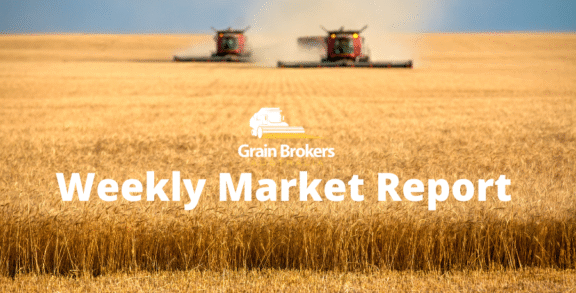
The harvest of this year’s winter and spring crops in France is humming along, according to the country’s agriculture ministry. One of the hottest and driest springs on record has promoted French crop development to such an extent that the harvest pace is well ahead of both last year and the five-year average.
While the hot and dry weather is great for harvest, cereal production is expected to be down significantly, and concerns are growing about the possible impact on this season’s corn production, especially with a second wave of scorching weather forecast for this week.
FranceAgriMer released data last week that put the soft wheat harvest at 50 per cent completed as of July 11. French farmers had only harvested 14 per cent of their crop a week earlier and just 3 per cent at the same time in 2021. The durum wheat harvest was 82 per cent done as of last Monday, compared to 50 per cent on July 4 and 37 per cent a year earlier. Harvesting in the southernmost regions had reached about 90 per cent, but the northernmost regions of Hauts-de-France and Normandie were only beginning last week.
The winter barley harvest is completed in most districts across the country, with 97 per cent in the bin at the beginning of last week compared to 83 per cent the previous Monday and only 39 per cent at the same time last year. As of the beginning of last week, the northern regions of Normandy and Brittany still had around 13 per cent and 20 per cent, respectively, to harvest. Reaping of the spring barley fields is also motoring along with 41 per cent of the total planted area covered by July 11, compared to 14 per cent on US Independence Day and 4 per cent on the same day in 2021.
The massive jump in harvest progress highlights how poor the yields must be in some areas allowing headers to navigate the fields far quicker than usual. So, it was a surprise to see the soft wheat crop ratings increase for the first time in many weeks. FranceAgriMer called the good-to-excellent category 1 per cent higher at 64 per cent, suggesting anticipated yields will improve as the harvest gets into full swing in the north. However, the poor-to-very poor category also increased by one per cent to 14 per cent, underscoring the weather-induced yield issues in the south. Crop conditions for both winter and spring barley were unchanged week-on-week.
The French Agriculture Ministry cut the country’s wheat production forecast from 35.4 million metric tonne last harvest to 32.9MMT this year. Further cuts are possible if yields fail to improve as expected as the harvest moves north. However, a drop in the average yield from 7.1 metric tonne per hectare last harvest to the current projection of 6.9MT/ha is not the only contributing factor, as the country’s planted area is also down by 5.6 per cent.
Winter and spring barley production is forecast at 11.2MMT collectively, down 2.4 per cent on 2021/22. The lost output will put a severe dent in the country’s exportable surplus of cereals, just as global consumers search for reliable substitutes for stranded Ukrainian grains.
That said, FranceAgriMer remains confident wheat exports will increase on the back of the Black Sea supply issues. The state back agency expects 2022/23 season wheat exports to countries outside the European Union to rise by 17 per cent to 10.3MMT compared to 2021/22.
The Maghreb countries of Northwest Africa are expected to be responsible for most of this increase, particularly Morocco, now that Algeria has a taste for Russian wheat. Add in the 7.1MMT of exports to fellow European Union member states, and French wheat exports are forecast to increase 3 per cent year-on-year to 17.4MMT, despite the decline in production.
Meanwhile, on the summer crop front, the heatwave conditions forecast for France this week have the trade and consumers on edge. The soil moisture profile is already well below average in many corn-growing districts, just as the crop moves from the vegetative growth phase to the high moisture dependent reproductive phase.
In the week ending July 11, FranceAgriMer estimated the proportion of the corn crop at the flowering stage rose from 30 per cent to 67 per cent. This compared to 9 per cent one year ago and emphasises just how quickly the crop has matured under the less than favourable conditions. Development was most advanced in the eastern regions of Auvergne-Rhone-Alpes and Alsace. The north-eastern region of Grand-Est, which includes Alsace, had the best crop conditions, with 96 per cent of the crop rated good or better.
On Monday of last week, FranceAgriMer estimated that 83 per cent of the French corn crop was rated good or excellent, down slightly from 84 per cent the previous week, which it still compares quite favourably with 89 per cent a year earlier.
However, with moisture demand peaking and the mercury tipped to exceed 40 degrees Celsius in some regions this week, more substantial rating downgrades are expected in the coming weeks. Temperatures above 35°C commonly lead to incomplete pollination, in turn having a negative impact on final yields. If the hot and dry weather continues without relief for the rest of July, corn production potential will be eroded very quickly.
The deteriorating harvest outlook in France comes amid a background of significant market uncertainty and volatility. Traders and funds seem to be selling the rumours regarding Ukraine’s potential to return as a major grain exporter rather than looking at cold hard facts. The impracticality of such an outcome will remain high as long as Russia demands the removal of Western sanctions and Ukraine rightly refuses to demine its Black Sea ports until the invaders goes home.
Call your local Grain Brokers Australia representative on 1300 946 544 to discuss your grain marketing needs.





